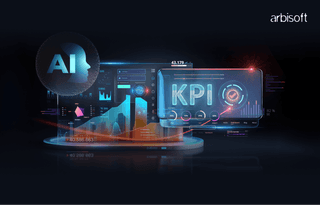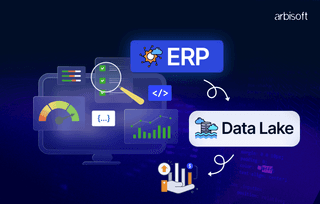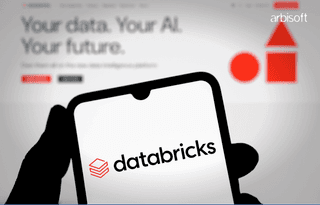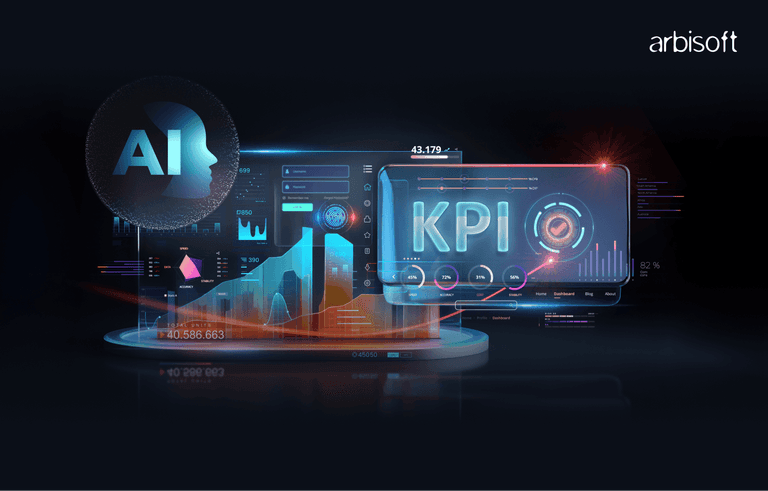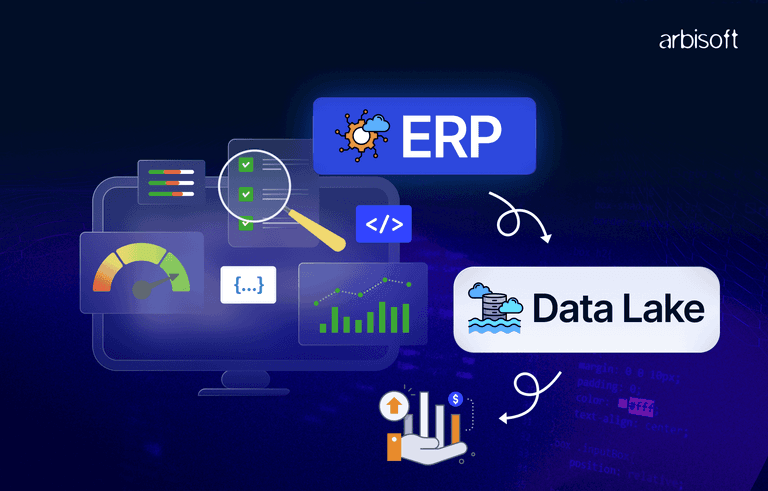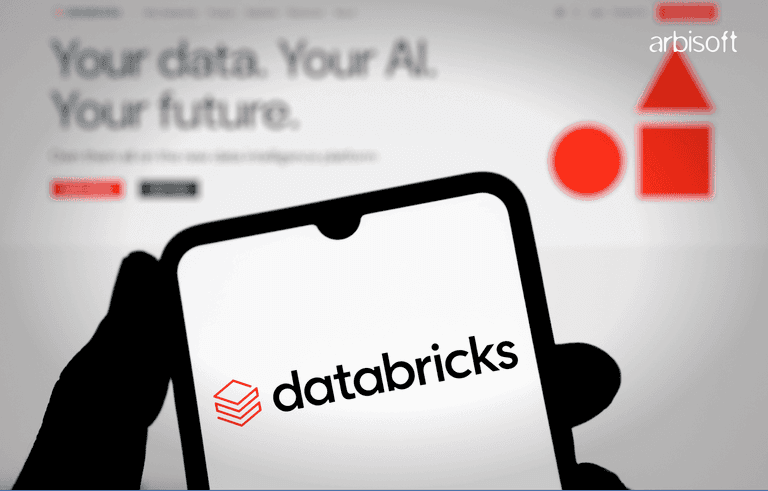We put excellence, value and quality above all - and it shows




A Technology Partnership That Goes Beyond Code

“Arbisoft has been my most trusted technology partner for now over 15 years. Arbisoft has very unique methods of recruiting and training, and the results demonstrate that. They have great teams, great positive attitudes and great communication.”
AI-Powered Test Automation in Software QA: Redefining Speed and Accuracy in Continuous Delivery

Smart QA teams are now slashing testing time from 2 weeks to 2 days. Bugs that once slipped into production? 90% fewer escapes. Around 72.3% of QA teams are already riding the AI wave to hit these numbers.
Why now?
Agile and DevOps have turned release cycles into sprints. Customers demand new features yesterday. But here’s the thing - manual testing can’t keep up. Teams drowning in 10,000 test cases? Scripts breaking with every UI tweak? It sounds like talk of the old times.
Enter AI-powered test automation, that is the game-changer.
- 60% faster testing cycles (IDC, 2025)
- 90% fewer defects escaping to production (Gartner)
- $2.3M saved annually per mid-sized company (Forrester)
AI isn’t just “nice to have” anymore. The big push is letting companies like Netflix deploy 100+ times a day without breaking things. This gives the QA teams a supercharged co-pilot. The one that learns, adapts, and even predicts where bugs will strike next.
If your testing strategy still relies on “click, wait, repeat,” you’re lagging behind. AI has undoubtedly become the price of admission for staying in the game.
Want to cut your testing cycles by 80%, reduce defects by 90%, and boost release speed?
Download this AI Test Automation Quick-Start Checklist to kickstart AI Test Automation


Current Market Trends For AI in QA
AI is now not just assisting but running QA workflows end-to-end. Teams are piloting “agents” that pick, run, and fix tests without human input. They’re blending in-lab and in-production checks to catch issues before users do. Self-healing scripts cut maintenance to a fraction of the time it used to take. Drag-and-drop tools let non-coders spin up tests.
The Agentic AI
AI agents are no longer just tools—they’re teammates. These systems autonomously prioritize high-risk tests, adapt scripts in real-time, and even diagnose failures by analyzing code changes.
For instance, Microsoft’s Copilot Studio lets teams build AI agents that automate complex SaaS workflows without coding, freeing engineers to focus on strategic tasks. Over 75% of enterprises now use AI-driven QA workflows, with 47% actively piloting Agentic AI solutions.
Shift-Right Testing
QA isn’t just about pre-deployment checks anymore. Teams now blend shift-left (early testing) with shift-right (post-launch monitoring), using AI to analyze live user data. This dual approach catches bugs that slip through initial tests, like edge cases in payment gateways or login flows.
"Companies using shift-right strategies report a 40% drop in user-reported issues because of AI flagging anomalies in high-value user journeys."
Self-Healing Test Automation
We don't have to rely on endless script maintenance anymore. AI tools like Katalon Studio now auto-correct broken tests when apps update—no human intervention needed.
Adoption of self-healing tools has exploded by 300% since 2023, with 85% of Fortune 500 companies embedding them in CI/CD pipelines.
Low-Code/No-Code Democratization
Non-coders are joining the QA teams. Platforms like QA.tech and Katalon Studio offer drag-and-drop interfaces, letting product managers and designers create tests.
"47% of teams now use low-code tools to bridge skill gaps, accelerating release cycles by 30%. - World Quality Report"
Ethical AI and Bias Mitigation
AI isn’t immune to bias, though. We have all witnessed it one way or another. QA teams now audit AI models for fairness, ensuring they don’t prioritize tests based on flawed data. A 2023 MIT survey found 74% of AI developers still wrestle with bias in their systems, pushing QA to catch skew before deployment.
Key Benefits of AI-Powered Test Automation
You’ve seen how AI is reshaping QA with trends like Agentic AI and self-healing tools. But let’s get real - what’s the ROI? In 2025, teams aren’t just adopting AI for hype—they’re chasing results. Here’s how AI-powered testing delivers game-changing value, from slashing costs to turbocharging release cycles.
1. Speed & Efficiency
AI slashes test execution time by 80%—what used to take 10 hours now takes 2.
"Teams fix bugs 90% faster than with manual testing. - Gartner"
Tools like ChatGPT for QA auto-write test scripts in minutes, not days, with real-time test generation. AI now prioritizes tests based on code changes, so teams focus only on what matters.
2. Enhanced Accuracy
According to a survey, 67% of teams using AI report zero false positives in critical tests. - Forrester.
AI mines past data to pinpoint failure hotspots using predictive analytics. AI dynamically adjusts test scope to fill gaps, boosting coverage by 46% (IDC).
3. Cost Savings
Speed and accuracy are game-changers, but AI isn’t just saving time—it’s saving cold, hard cash.
"Companies save $1.2M yearly by automating 70% of repetitive QA tasks. - Deloitte"
Self-healing scripts cut script upkeep costs by 60%. Fixing bugs pre-production costs 6x less than post-launch patches.
4. Scalability
Scalability isn’t just about doing more tests—it’s about doing them smarter. Teams that use cloud grids ship features 3x faster and cut infrastructure costs by 40% (IDC, 2025).
"92% of enterprises now run 10,000+ tests per release via cloud AI grids. - Microsoft Azure Report"
No more waiting for hardware or battling device shortages. For instance, Airbnb runs thousands of automated UI tests across regions and device types to ensure a seamless experience for travelers and hosts worldwide, before any code goes live.
"AI redistributes tests based on real-time server loads, slashing runtime by 35%. - Gartner"
Challenges & Mitigation Strategies
These challenges aren’t roadblocks—they’re stepping stones. Teams that upskill and adopt hybrid frameworks release updates 2x faster than peers stuck in “integration hell.” And with synthetic data, you’re not just avoiding fines—you’re building user trust. Let us take a look at a few.
1. Skill Gaps
45% of QA teams admit they lack AI/ML skills, costing companies $420K yearly in delayed releases. - Gartner, 2025
The Solution:
- Upskill with micro-courses - Platforms like Coursera and Udacity offer 4-hour AI testing certifications. Teams using these report 30% lower turnover.
- Low-code tools - Let non-coders contribute. 58% of teams now train product managers to build basic test scripts via drag-and-drop interfaces.
2. Integration Complexity
63% of enterprises struggle to blend AI tools with legacy systems, wasting approximately 200+ hours per project. - Forrester
The Solution
- Phased rollouts - Start with non-critical workflows. AI integrations can help resolve compatibility issues swiftly and promptly.
- Hybrid frameworks - Mix old and new tools. For instance, use Selenium for core scripts and AI for visual testing, cutting integration costs by 40%.
Actionable Steps
Overcoming challenges is just the first step. In 2025, 78% of top-performing QA teams credit their success to structured implementation plans, according to Gartner. Here’s how you can join them.
1. Start Small, Win Fast
Begin with focused workflows like regression testing.
"Teams starting with pilot projects see 3x faster ROI than those attempting big-bang rollouts. - Deloitte, 2025"
2. Adopt Shift-Left + Shift-Right
- Shift-left - Embed AI testing into CI/CD pipelines. Tools like GitLab AI auto-scan code commits for risks.
- Shift-right - Use AI to monitor post-launch user behavior. For instance, Spotify’s AI detects playback bugs in real time, reducing support tickets by 35%.
"67% of enterprises using both strategies fix bugs 50% faster. - McKinsey"
3. Use Open Source
Using an open-source AI framework and tools and significantly cut the tooling cost.
"Open-source AI testing tools grew by 120% in 2025, with 52% of teams adopting them. - GitHub Report"
4. Measure What Matters
You can choose to track:
- Test flakiness (<5% target)
- Release cycle time (aim for 30% faster)
- Defect escape rate (below 2%)
"Teams measuring these metrics achieve 90% higher QA ROI. - Forrester"
These steps work—but only if you act. By 2026, laggards will spend 2x more time fixing bugs than shipping features. That's a big leap to risk!
The clock’s ticking. In 2025, the gap between AI-powered teams and everyone else isn’t closing—it’s widening.
The Path Forward
It is high time we make this even - this isn’t about replacing humans. It’s about opening their potential with AI as a force multiplier.
AI isn’t replacing QA engineers. It’s giving them more power. It is also giving human creativity for edge cases and UX innovation. The machine precision for speed, scalability, and data-driven insights comes along with it.
"Companies blending AI with human expertise report 4.2x higher customer satisfaction. - PwC, 2025"
Start today. Pilot one tool. Measure one metric. In 2025, the gap between leaders and their competitors isn’t just about tech—it’s about who acts now.








